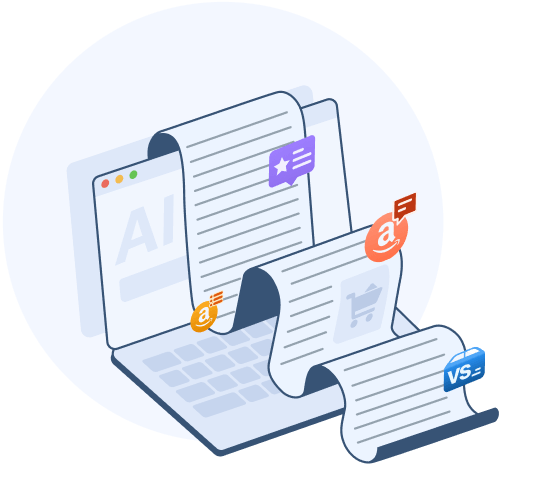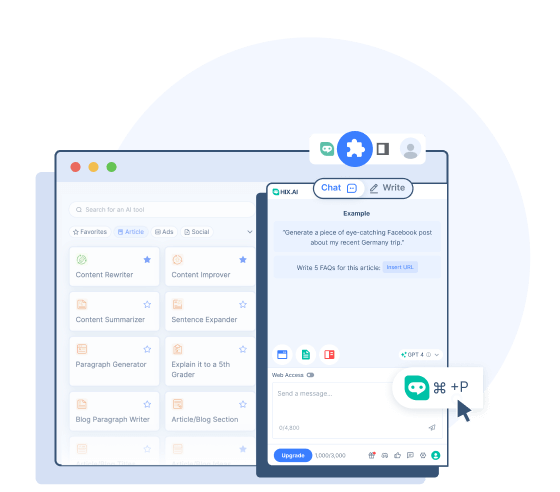Dear Sir/Madam, thanks for reading our guide to formal emails. We would be delighted to show you through the wonderful world of formal emails.
That’s how you may imagine formal emails are, but things have changed. We’ve dropped the “Dear Sir/Madam” for a more personalized approach. That’s great, but we have to stay professional too.
Why? Because formal emails are used worldwide to build connections, book meetings, say thanks, accept jobs, resign from roles, and millions of other things!
We’re email experts with an unrivaled eye for detail. Want to learn how to write better emails? This guide covers everything you need to know, including 5 professional email examples, a breakdown of the email format, and some expert tips. You can use our samples or smash them by creating your own!
In this guide, we cover:
- Formal greeting email
- Formal thank you email
- Formal invoice email
- Formal resignation email
- Formal goodbye email
By the end, you'll have the skills, experience, and understanding to create fantastic formal emails!
Compose Impeccable Formal Emails with a Free AI Email Writer
Do you find writing formal emails intimidating? Use our AI email writer to ease your way into professional email writing!
What is a formal email?
Formal emails are sent to someone you don't know. It could be a new colleague, customer, boss, or cold email for new work.
Formal emails are 100% professional and follow the accepted business message format. They contain no slang, jokes, colloquialisms, or unclear terminology. And never try to be funny in a formal email!
If you've never written a formal email, don't worry! Our essential guide below breaks down the formal format into simple steps.
Firstly, let's start with 5 professional email examples so you can see how it's done.
5 professional email examples
We can start with 5 professional email examples to illustrate the basic principles. These email samples are practical examples of different types of formal emails. Use these as inspiration for creating your own formal emails.
Formal greeting email
Greeting emails are business essentials! You'll send these to new colleagues, customers, clients, bosses, residents, visitors, and more. Our formal greeting email sample is simple, clear, and compelling – meaning you'll make the best first impression.
Dear [Recipient's Name],
I hope this email finds you well. I am [Your Name], [Your Position] at [Your Company]. I am writing to extend a warm welcome to you as you begin your journey with us. We are thrilled to have you on board and look forward to the unique perspective you will bring to our team.
Please feel free to reach out if you have any questions or need assistance as you settle in. Our team is here to support you, and we are committed to ensuring your transition is as smooth as possible.
Once again, welcome to [Your Company]. We are excited about the opportunity to work with you and are confident that you will make significant contributions to our shared goals.
Best regards,
[Your Name]
HIX Email WriterWrite/Reply to Emails Instantly
Type // to draft emails in no time
Get tailored replies with one click
Quickly summarize a received email
Read also: How to start an email? (10 email greetings examples included)
Formal thank you email
If someone has done something to help, it's time to say thank you. In our formal email thank you sample, we keep it short and focus on the impact and importance of what the person has done. So, without delay, here's a formal thank you email sample.
Dear [Recipient's Name],
I hope this email finds you well. I am writing to express my sincere appreciation for your help with [specific task or project]. Your expertise and dedication have greatly contributed to its success.
Your support and guidance have been invaluable, and I am grateful for the time and effort you have put into this endeavor. It is truly inspiring to work with someone as knowledgeable and skilled as you.
Thank you again for your outstanding contributions. Your assistance has made a significant impact, and I am confident that we will continue to achieve great things together.
Best regards,
[Your Name]
Read also: How to respond to a thank you email (5 samples & templates)
Formal invoice email
You've done the work, so you need to get paid – and we can help with our formal invoice email sample. Invoices are all about details, so be sure to check every line and ensure you've included all the details you need to avoid your invoice being ignored or unpaid.
Dear [Recipient's Name],
I hope this email finds you well. I am writing to formally submit the invoice for the work completed. Please find attached the detailed invoice for your reference.
Kindly review the invoice and let me know if any clarification or additional information is required. The total amount due is [Amount] and the payment terms are [Payment terms].
Thank you for your attention to this matter. Should you have any questions or concerns, please don't hesitate to reach out.
Best regards,
[Your Name]
Read also: How to write invoice emails (5 templates & samples)
Formal resignation email
So, you've decided to move on to a new opportunity – you'll need to resign. This formal resignation email sample is a professional way to leave your role while maintaining – and even improving – your reputation.
Dear [Recipient's Name],
I hope this email finds you well. I am writing to inform you that after careful consideration and deliberation, I have made the difficult decision to resign from my position at [Company Name], effective [Resignation Date].
I am grateful for the opportunities and experiences I have gained during my time at the company. I have learned a great deal from working with such a talented team, and I appreciate the support and guidance provided by my colleagues and supervisors.
Please let me know how I can assist with the transition process. I am committed to ensuring a smooth handover of my responsibilities and will do my best to tie up any loose ends before my departure.
Thank you for your understanding and support. I wish the company continued success in the future.
Best regards,
[Your Name]
Formal goodbye email
This formal good email sample can be sent on your last day in a role, at a company, or in a position of authority. Formal messages are professional and practical, so you may want to add some examples or emotions to this email sample.
Dear [Recipient's Name],
I hope this email finds you well. I am writing to inform you that today is my last day in this role/position at [Company Name]. I wanted to take a moment to formally say goodbye and express my heartfelt gratitude for the opportunity to work with you and be a part of this incredible team.
During my time here, I have witnessed the dedication and professionalism of each team member, and I am grateful for the support and encouragement I have received from you and the entire team.
I am proud of the work we have accomplished together and the progress we have made. It has been an honor working with such talented individuals, and I will truly miss being a part of this team.
As I move on to my next adventure, I would like to extend my best wishes to you and the team for continued success and growth. Please keep in touch, and do not hesitate to reach out if you ever need assistance or have any questions.
Thank you again for everything.
Best regards,
[Your Name]
How to write formal emails – the essential guide
Writing formal emails may seem challenging, but it's actually simple. Why? Because there's a standard formal email format to follow. Yes, we can stip everything back into just three sections, or building blocks. Each section follows the last, flowing to create a formal email.
The three parts include:
- Subject line
- Body copy
- Sign-off/next steps
The great thing about formal emails is that there's no need to try and be creative or funny. In fact, that's the opposite of what you should do. Nobody receiving a formal email expects to laugh, smile, or find it funny. (So no jokes, emojis, or images of your cat please!)
Formal emails are effective because they're simple, clear, and easily understood. This essential guide breaks down the formal email format and shows you how to build your own template.
Formal email subject line
Everything starts with a formal email subject line. The subject line of every email should conform to a few rules. Subject lines should be short, easily understood, targeted, and professional.
In fact, the fewer words you use, the better. This is because most people will check out messages on their mobile phones, and long subject lines may not display properly.
Formal email subject lines are simple and straightforward to write. If you want some inspiration, try these:
- Thank you for your recent email
- Greetings from (your name)
- Introduction: (your name)
- Please accept my resignation
- Resignation notice: (job name)
- Goodby on my last day
See what we mean? No personality, just 100% professional. That’s what formal messages are all about.
Formal email body copy
In the formal email body, you delve into the details and engage your audience. The great thing about formal emails (as our samples show) is how easy they are to write.
Here, we build up a formal email sample to request information from a new supplier.
Start with a polite greeting. In the past, all formal emails would begin with a "Dear Sir/Madam" or "Dear (person's name)," – but things have moved on. Today, you should start with the person's name ("Hi") or with a collective term if you're engaging a group ("Hi, colleagues").
One principle all emails should follow is, to sum up everything in the first sentence or paragraph.
So, in this formal email sample, we will request some information.
"My name is (your name). I'm contacting you from (company name) and would like to request (whatever you want to request)."
This is a basic message, but it does everything you need it to. We want to add more context, so we can include more details in our email sample.
"I'm requesting the information for my business. We are interested in learning about your products as we seek alternative suppliers."
This is great. Now explain precisely what you want. Use bullet points or lists to make it as easy as possible for suppliers to complete your requests:
"To make it as easy as possible for you to complete my request, I've listed out what I need here: (include list)."
Learn more about how to write emails requesting something.
Formal email sign-off/next steps
At the end of the email, you'll want to wrap things up professionally – but before you do, add a deadline and set out the next steps. How? Let's show you this email sample ending.
"We've sent this request to several other suppliers and have set a deadline for responses of (insert deadline date). Please can you confirm that you have received this email and that you intend to submit a response? If you have any questions or queries or require clarification of any details, you can contact me at (insert contact info)."
We're almost at the end – but you'll need to sign off politely.
"Thank you in advance for submitting a response. We're excited at the potential of working with you."
Finally, add a sign-off (Many thanks, kind regards, etc.) and the rest of your information. Include your name, job title, contact details, and full signature.
Learn more about how to end an email professionally.
Dos and don’ts of formal emails
Here are some dos and dont’s to help you create formal emails that get the result you want. It’s all about helping you to find your voice and deliver a message that cuts through the noise.
- Don’t use “Dear Sir/Madam”. Do use the person’s first name.
- Don’t wait for ages to get to the point. Do sum it up in the first sentence.
- Don’t forget any details. Do take time crafting a message and checking you’ve included everything.
- Don’t go off-script and ignore the format. Do follow our guide above.
- Don’t make jokes or try and make people laugh. Do use a professional tone of voice.
- Don’t waste time. Do keep emails as short as possible.
- Don’t struggle to write emails on your own. Do use HIX.AI's email generator.
- Don’t send it without proofreading. Do proofread (obviously).
- Don’t forget to add a CTA and the next steps. Do avoid sounding like you’re telling someone what to do.
Conclusion
Thanks for reading. Yours sincerely, HIX.AI.
OK, the formal email format has changed a bit (thankfully) but you still need to know how to write professional emails in the workplace. Here’s our essential primer: Stick to the format, follow our advice, and focus on creating brief and business-like messages. If you're struggling, check out our email samples for inspiration. Or, for the simplest, easiest, and most effective formal emails, use HIX.AI – the world's best business writing AI assistant.



